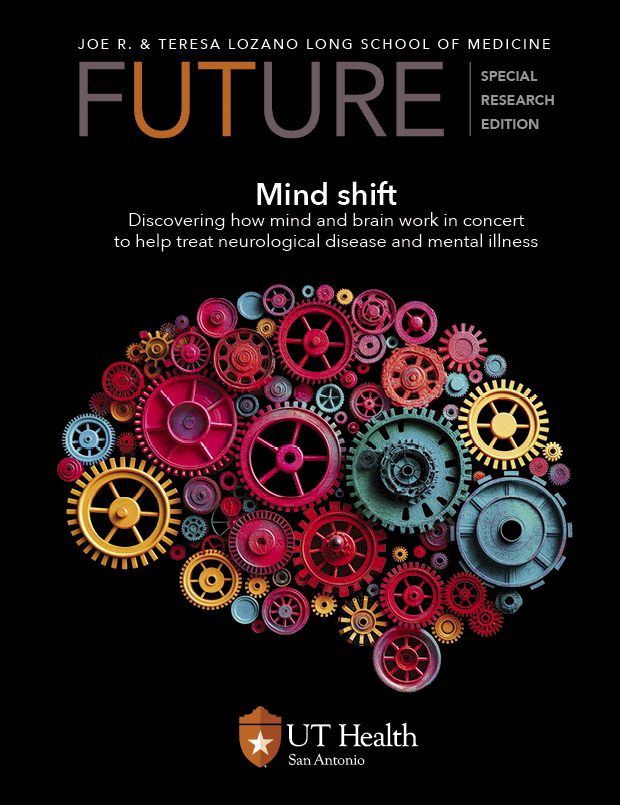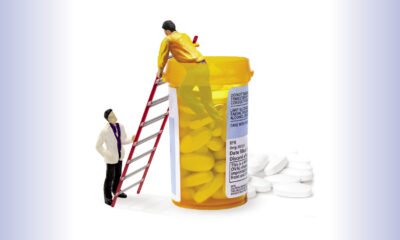When ‘time is brain’
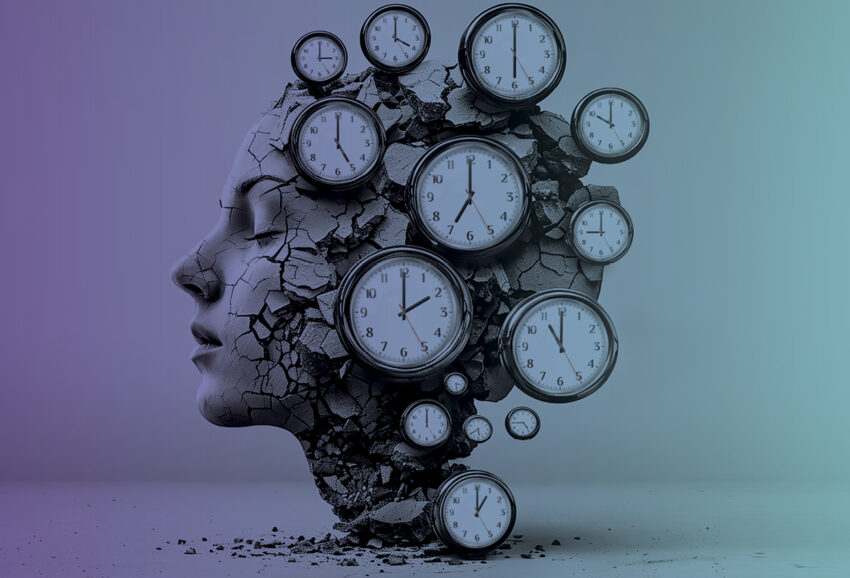
Coordinated collaboration and novel therapies help minimize stroke damage
By Jessica Binkley Lain
In the world of stroke care, every minute counts. Lee Birnbaum, MD, professor in the departments of neurology and neurosurgery in the Joe R. and Teresa Lozano Long School of Medicine, sheds light on the latest developments in emergency treatments, post-stroke therapies and community education aimed at enhancing patient outcomes.
Current emergency protocols for stroke treatment encompass a range of interventions designed to quickly restore blood flow to the brain. For instance, employing IV thrombolytics and performing intraarterial catheterizations help dissolve clots and clear blockages, while mechanical thrombectomy allows for precise clot removal directly from brain blood vessels.
Like a competitive swimmer or runner, shaving time is always the goal in stroke care.

“We often use the term ‘door to needle’ to refer to the time it takes a patient to receive treatment, from when they enter the door to when medication is given,” Birnbaum said. Another common mantra, “time is brain,” emphasizes how critical speed and efficiency are when it comes to treatment effectiveness and reducing disability among stroke survivors.
Birnbaum noted that advancements in thrombolytics, like the drug Tenecteplase, and thrombectomy tools continually refine and improve upon treatment protocols. But another critical part of triage relies on what happens before a patient gets to the door.
Collaborating with the South Texas Regional Advisory Council, which includes local emergency response teams like EMS and the fire department, the university is part of an initiative that ensures stroke patients receive fast transport to the appropriate hospital or stroke center where specialized care can be promptly administered.
“If you’re having a stroke or think you’re having a stroke, it’s always best to call 911 and not try to go in a private vehicle,” Birnbaum said. “Time is brain, so you want to make sure you’re getting to the right hospital the first time.”
The recovery role of star-shaped cells
Beyond triage and acute treatment, research into neuroprotective agents to mitigate damage after stroke is rapidly advancing. Ranging from pharmaceuticals to probiotics and vitamins, these treatments aim to reduce stroke size and improve post-stroke outcomes.
In the complex landscape of neuroscience, neurons typically take center stage for their role in nearly everything in the brain. Neurons excel in signaling, but when faced with injury, like from a stroke, they get over-excited, signaling too much. This can lead to toxicities and imbalances that swell the brain and, ultimately, cause cell death.
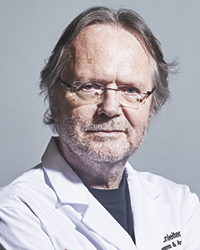
According to James D. Lechleiter, PhD, it’s the astrocytes that quietly uphold the brain’s delicate environment. Astrocytes maintain and help restore the environment, putting the brake on over-active nerve cells, helping them “get their signaling back to where it’s supposed to be,” explained Lechleiter, a professor in the Department of Cell Systems and Anatomy and director of the health science center’s Optical Imaging Core. He has dedicated his career to these star-shaped “caretaker cells” of the brain and their potential as a target for innovative drug therapies.
What makes astrocytes such an exciting target for stroke recovery is that they can function well with little to no oxygen.
“Astrocytes can generate a lot of adenosine triphosphate, or ATP, during a crisis period. ATP is the molecule that gives energy to cells to carry out all their processes,” Lechleiter said. “The drug that we developed spurs the astrocyte to use their mitochondria to make more ATP more efficiently. All these ATP-dependent processes that are good for neuroprotection, like restoring the ion balance, maintaining membrane potentials, maintaining good electrical signaling — that all depends on ATP. So, if you can take the brakes off astrocytes’ ability to make more ATP, it enhances those neuroprotective processes, which mitigates the damage after a stroke. And that’s what this drug can do.”
Preserving brain function
The compound, which currently has no official name but is referred to as AST-004, has been successful in preclinical non-human primate studies and a phase 1 clinical trial, where safety in healthy humans was established. Now Lechleiter and his teammates at Astrocyte Pharmaceuticals — to which UT Health San Antonio has given exclusive licensing rights to develop the drug — are preparing for phase 2 clinical trials. These trials will focus on evaluating the effectiveness of AST-004 in reducing brain tissue loss in patients with large occlusion strokes, a severe type of stroke where blood clots cause substantial brain damage.
“What we want ultimately is for AST-004 to be administered first thing, without concern about what kind of stroke someone is having,” Lechleiter said. He explained that, currently, imaging must be done first to determine if a stroke is caused from a clot or from bleeding, which is about a two-hour delay before treatment can be administered.
“But AST-004 doesn’t care. It can do both. Its neuroprotective effects are good for either type of stroke, meaning someone can be treated the moment you suspect there’s stroke or other injury,” Lechleiter said.
Additionally, AST-004 shows promise beyond stroke treatment. The drug’s rapid onset and potential for use in portable forms, like dissolvable tablets, make it a candidate for treating traumatic brain injuries on the battlefield or in sports settings. With ongoing research and development, AST-004 has the potential to revolutionize emergency care protocols.
Moreover, preliminary research hints at its efficacy in addressing chronic conditions like Alzheimer’s disease and even addiction, which would make AST-004 a transformative, comprehensive therapy in neurological medicine and overall brain health.
Spreading Stroke Awareness
Community education geared at spreading stroke awareness is a significant factor in reducing damage to the brain of affected individuals, according to Lee Birnbaum, MD. “Health care information that fits the community’s needs is essential. For our community in San Antonio, it’s important that we offer awareness and education in both English and Spanish. Promoting the ‘RAPIDO’ mnemonic has been particularly important for our patients in South Texas,“ Birnbaum said. While the BE FAST acronym (Balance, Eyes, Facial drooping, Arm weakness, Speech difficulties, Time to call emergency services) remains a crucial mnemonic, the RAPIDO acronym has been embraced as an important mneumonic for Spanish-speaking patients.
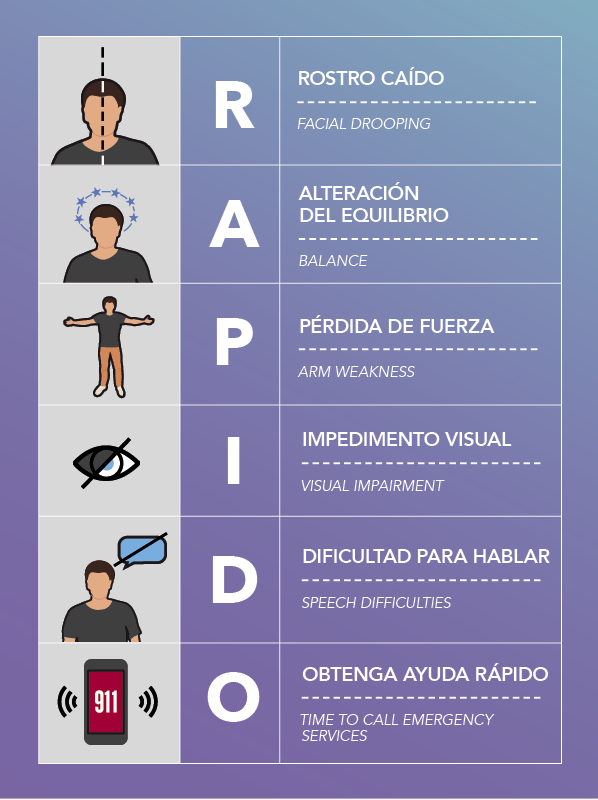
Primary and Secondary Prevention
“Cardiovascular health is important for brain health, so following heart-healthy guidelines will also help to ensure a healthy brain and is something you can do for stroke prevention,” said Lee Birnbaum, MD.
For primary prevention, he recommends following a lifestyle plan outlined by the American Heart Association called “Life’s Simple 7” metrics:
1. Stop Smoking
2. Eat Better
3. Get Active
4. Lose Weight
5. Manage Blood Pressure
6. Control Cholesterol
7. Reduce Blood Sugar
After having a stroke, addressing secondary stroke prevention is a critical part of comprehensive stroke care. Birnbaum outlines a proactive approach that begins with identifying and mitigating risk factors such as smoking, diabetes and hypertension. Tailored interventions, including lifestyle modifications and targeted medications like blood thinners or cholesterol-lowering drugs, aim to minimize the likelihood of recurrent strokes, safeguarding long-term patient health.

